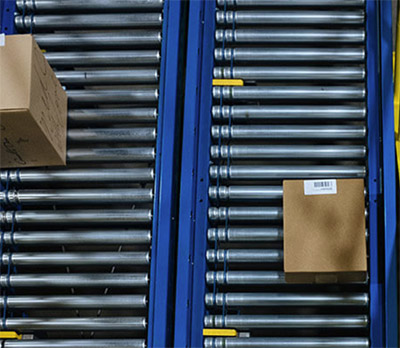When to use roller conveyors
Accessories and add-ons
Rollers can accommodate accessories like pins, package stops, pop-up rollers, blades and other options to help stop and precisely control the load. Some possibilities include:
· Lift bars, which fit between rollers and raise/lower the load at need.
· Under-roller scanners.
· Diverts, wheels and pop-up rollers.
Rollers control the load less precisely than belts but offer more types, configurations, and accessories. When a tote or carton is conveyed on rollers, it can move across the rollers and bump the guardrails. For most products, the impacts are minor and don’t cause issues, but for some more fragile loads, you need finer control provided by belt conveyors.
Ease of human interaction
Rollers are easier to deal with when people must push, pull, remove, rotate, and interact with the load. Due to their low coefficient of friction, it’s much easier for a person to slide a tote across rollers than a belt. This is why picking and packing applications are frequently specified with roller conveyors. When you have side-by-side lines that merge loads, roller is the ideal conveyor, whether that’s done by people or mechanical pushers.
Rollers move at inconsistent speeds
Load characteristics may affect the rate of speed an item moves on a roller conveyor. Heavier, larger loads may move slower than light ones on rollers. This may or may not be important to your application, but keep it in mind if constant flow is desired.
Heavy, difficult loads
Most pallet and pipe conveyors tend to be roller systems, due to high capacities. These high-duty loads tend to be better suited for roller systems, although there are specific cases where they are best conveyed by belt.








